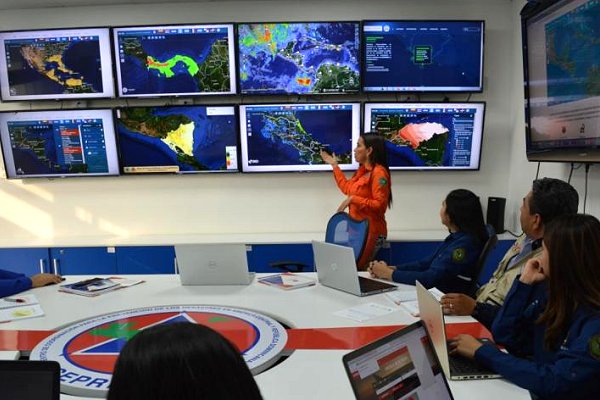
NASA disasters programme joins Anticipation Hub

NASA last week joined the Anticipation Hub created by the German Red Cross, the IFRC and the Climate Centre with support from the German Federal Foreign Office and formally launched last month.
The disasters section of the US space agency’s Earth Applied Sciences Program will hope to add “unique perspectives from Earth-observing instruments operating within and above Earth’s atmosphere,” a NASA news story said Friday.
“NASA’s participation will…help illustrate how Earth is a complex system that is affected by land use, human activities [and the] social and economic context, as well as weather, water and climate phenomena.”
‘Actionable insights’
The Anticipation Hub is a one-stop-shop for knowledge, learning and guidance on anticipatory action, and has more than 60 partners across the Red Cross Red Crescent Movement, governments, universities, research institutes, NGOs and UN agencies.
“The knowledge and intelligence shared through this global network will complement early warning with deeper understanding of potential perils and incentives for timely interventions to reduce exposure, mitigate vulnerability and strengthen coping capacity,” said David Green, NASA Disasters Program Manager.
“This increased awareness and predictive action will ultimately enable communities to move from ‘reaction’ to science-informed ‘anticipation’…reducing risk and developing resilience to prevent natural hazards from becoming disasters.”
NASA says it’s providing “actionable insights from data analysis, enhanced situational awareness and ‘environmental intelligence’ from information to enable anticipation of future situations to inform choice and support decision-making.”
‘The intelligence shared through this network
will complement early warning with
deeper understanding of potential perils
and incentives for timely interventions’
Andrew Kruczkiewicz, a Senior Researcher at the International Research Institute for Climate and Society and a Science Adviser at the Climate Centre, said today: “The Anticipation Hub is an ideal platform for convening discussions on how to integrate satellite data into decision-making on early action, and how space missions can actually reflect the priorities of anticipatory action.
“With the increasing precision of NASA satellites we can improve disaster response and recovery, and there are also emerging opportunities to develop risk-informed anticipatory action driven by satellite data.
“There’s a responsibility to ensure future growth is driven by humanitarian considerations, from each of the perspectives of science, policy and practice.”
Guatemalan disaster coordinators from the Central American CEPREDENAC agency use NASA satellite data to analyze potential impacts from Hurricane Iota last November – only the second Category 5 Atlantic hurricane on record to form in that month. (Photo: CEPREDENAC)